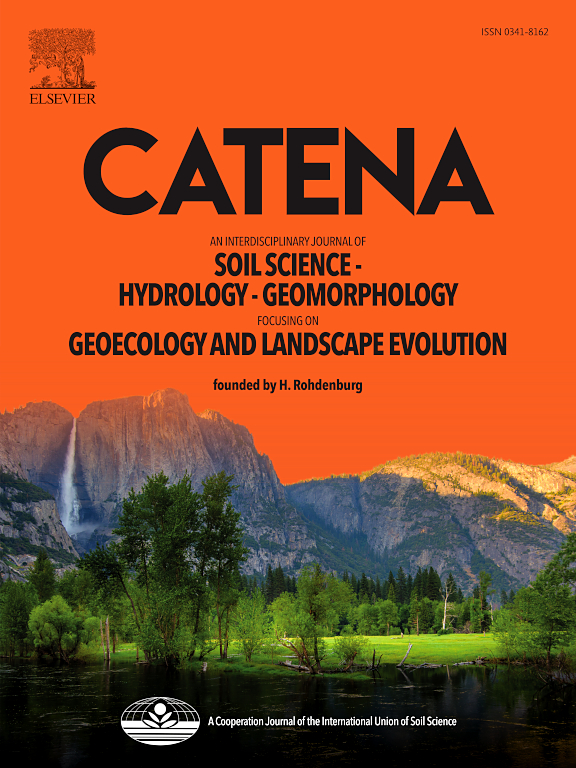Arctic soil development under changing climate conditions
IF 5.7
1区 农林科学
Q1 GEOSCIENCES, MULTIDISCIPLINARY
引用次数: 0
Abstract
As global temperatures rise, soil dynamics in areas affected by changing snow and permafrost are increasingly important due to their impact on carbon release and ecosystem functionality. This study examines soil development and variability in Kangerlussuaq, southwest Greenland, from the ice margin to inland areas, assessing how soil characteristics evolve with time since glacial retreat and across different spatial scales. The findings highlight the interaction between geomorphic and pedogenic processes, with soils influenced by glacial deposition, aeolian inputs, and topography. The most common soil groups include Regosols, Cambisols, Cryosols and Histosols. Soil depths range from shallow layers constrained by bedrock or permafrost to more developed profiles exceeding 80 cm, with an average depth of 24–40 cm. Buried organic layers and paleosols reflect the area’s aeolian history and could partly explain the highly variable distribution of soil organic carbon showing weak or inconsistent correlations with slope and aspect, although organic carbon content was higher on cooler wetter north-facing slopes. Future permafrost thaw will disproportionately impact ice-rich soils in waterlogged and north-facing areas, releasing stored carbon and potentially accelerating climate feedback loops. In contrast, south-facing slopes with seasonal thaw will experience minimal structural change. This research established a detailed baseline for monitoring changes in soil properties and carbon dynamics over time, particularly as warming continues to affect Arctic environments.
气候变化条件下北极土壤的发育
随着全球气温上升,受积雪和永久冻土变化影响地区的土壤动态因其对碳释放和生态系统功能的影响而变得越来越重要。本研究考察了格陵兰岛西南部Kangerlussuaq从冰缘到内陆地区的土壤发育和变异性,评估了自冰川退缩以来土壤特征在不同空间尺度上的演变。这些发现强调了地貌和成土过程之间的相互作用,土壤受冰川沉积、风成物输入和地形的影响。最常见的土壤类群包括浅溶质、寒溶质、低温溶质和组织溶质。土壤深度范围从受基岩或永久冻土约束的浅层到超过80厘米的较发达剖面,平均深度为24-40厘米。埋藏的有机层和古土壤反映了该地区的风成历史,并可以部分解释土壤有机碳分布的高度变化,其与坡度和坡向的相关性较弱或不一致,尽管有机碳含量在较凉爽湿润的朝北斜坡上较高。未来的永久冻土解冻将不成比例地影响涝渍和朝北地区富含冰的土壤,释放储存的碳,并可能加速气候反馈循环。相比之下,季节性解冻的朝南斜坡将经历最小的结构变化。这项研究建立了一个详细的基线,用于监测土壤性质和碳动态随时间的变化,特别是在气候变暖继续影响北极环境的情况下。
本文章由计算机程序翻译,如有差异,请以英文原文为准。
求助全文
约1分钟内获得全文
求助全文
来源期刊

Catena
环境科学-地球科学综合
CiteScore
10.50
自引率
9.70%
发文量
816
审稿时长
54 days
期刊介绍:
Catena publishes papers describing original field and laboratory investigations and reviews on geoecology and landscape evolution with emphasis on interdisciplinary aspects of soil science, hydrology and geomorphology. It aims to disseminate new knowledge and foster better understanding of the physical environment, of evolutionary sequences that have resulted in past and current landscapes, and of the natural processes that are likely to determine the fate of our terrestrial environment.
Papers within any one of the above topics are welcome provided they are of sufficiently wide interest and relevance.
 求助内容:
求助内容: 应助结果提醒方式:
应助结果提醒方式:


